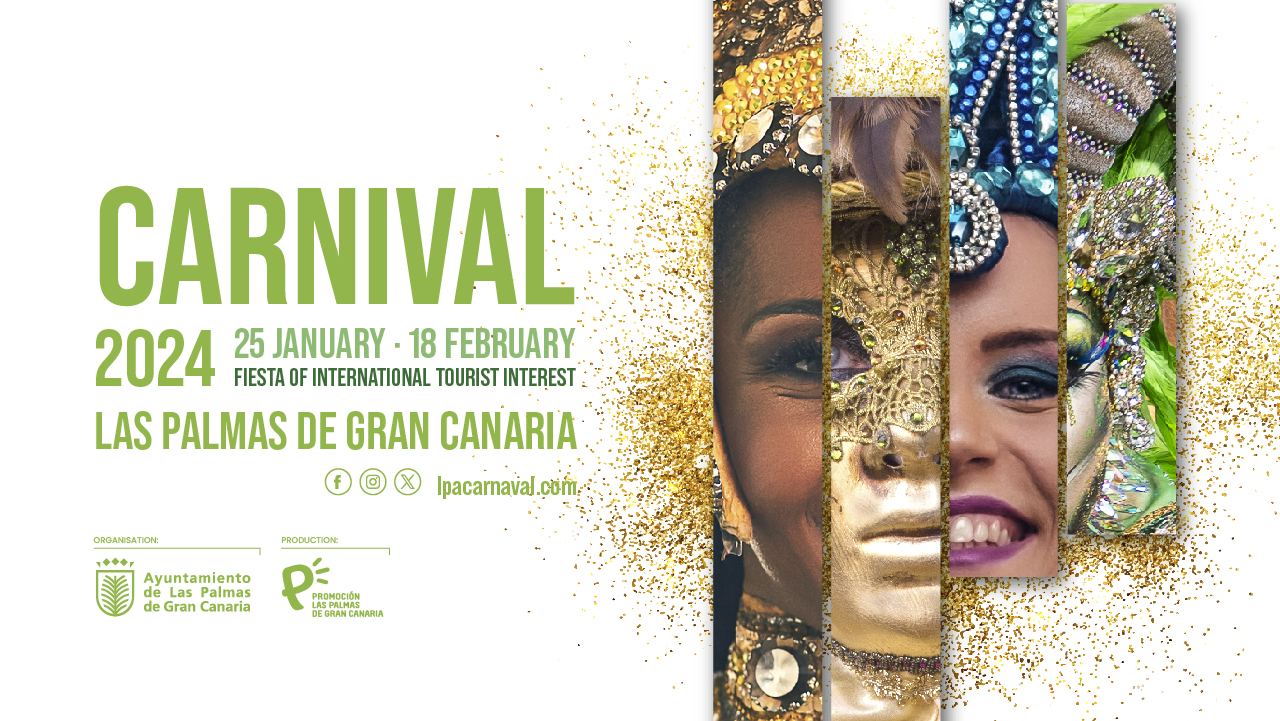A pulse beating down the years: the origin and path of the Las Palmas de Gran Canaria Carnival
In 2021, the Las Palmas de Gran Canaria Carnival comes to a compulsory halt: the crises generated by the COVID-19 pandemic have prevented the celebrations for the first time since the Francoist dictatorship. The "fiesta", however, is still alive in the heart of the city.
In 2021, the Las Palmas de Gran Canaria Carnival comes to a compulsory halt: the crises generated by the COVID-19 pandemic have prevented the celebrations for the first time since the Francoist dictatorship. The "fiesta", however, is still alive in the heart of the city. And in the heart of the organisers themselves, who are broadcasting constant messages on the digital sites this year, reminding everyone that the flame is still alight (although, of course, avoiding the celebrations not recommended by Public Health, and inviting us to remember previous editions). Why is this celebration so significant? So much so that it should be so sorely missed?
Well, Carnival goes practically hand in hand with the history of the Gran Canaria capital itself, which was founded in 1478. In the sixteenth century, we find the first references to masked dances (the first, in 1574 in the house of Canon Pedro León, on the occasion of the wedding of Matías Carrasco). On more characteristic dates, the constant flow of Italian visitors encouraged the organisation of these first Carnival festivities. In 1521 a group of people from Genoa promoted these first popular fiestas. The Carnival celebrations would continue to be held, in one way or another, throughout the following centuries.
In the nineteenth century, it was the institutions themselves which began to set up the first festivities, along with the popular cavalcades of floats. The Club Las Palmas, the Círculo de Amistad and the Círculo Mercantil were some of the bodies organising these events. Carnival came to occupy spaces in what are now the Pérez Galdós Theatre and the Gabinete Literario.
During the dictatorship, Carnival, then banned, dressed itself up as the Winter Fiestas. People rustled up disguises, which they would cover up with blankets or sheets until they got to the place where the clandestine celebration was to take place. People from the La Isleta quarter were particularly active in keeping this flame alive.
The tradition of Carnival was recovered in 1976. If continued to grow over time, bringing in its murga satirical performances and comparsa street bands and its iconic Gala Queen, contemporary events which have come to be a big feature of the 21st century programme: from the spectacular and famous Drag Queen Gala to the Dog Carnival or Body Painting, along with everything surrounding the children's Carnival and its Queen, and the Grand Dame's Gala. The cavalcades of floats have survived five centuries, a sign of a celebration which is the watchword for Las Palmas de Gran Canaria.
Photo credit: Canarian historical photographic archives. Gran Canaria Council. Fedac.












